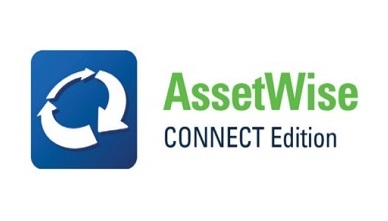Improves overall accessibility, quality, integrity, and relevance of asset data, in-context, across the asset lifecycle.
Trust AssetWise ALIM as your system of record to control structured and unstructured information, control documents and records, manage changes, and ensure the delivery of accurate information to engineering, operations, and maintenance. Inherently spatial and network aware, AssetWise leverages digital engineering models to support superior asset performance.
AssetWise ALIM integrates configuration and change management best practices and manages relationships between information types including asset data, documents, organizations, requirements, people, and processes.
Underpinned by a connected data environment, with AssetWise ALIM you can:
- Increase efficiency by accurately managing, controlling, distributing, and archiving all types of information related to infrastructure assets
- Enable information integrity by identifying and retaining the context of information and relationships to your projects, processes, equipment, and users
- Ensure that asset configurations conform to requirements with configuration management
- Reduce risk, enhance safety, and achieve industry and environmental regulatory compliance with disciplined asset lifecycle information management and detailed reporting
- Comply with corporate record keeping policies by managing your corporate records and associated information across the lifecycle
- Manage asset structures and associated tags including systems, components, product and item baselines, snapshots, and serialized items
- Manage key programs, like cyber security, more effectively by managing critical assets under rigorous configuration and requirements, management controls, and dedicated workflows
Define and manage asset tags
Manage asset structures, including product and item baselines, snapshots, and serialized items, as well as persistence and change management of tags and physical items. Easily identify critical information with predefined information types using data and behavior characteristics based on best practices.
Manage and control records
Increase efficiency by accurately managing, controlling, distributing, and archiving all types of documents and records relating to infrastructure assets and ensure delivery of accurate information to operations, maintenance, and engineering.
Manage asset configurations
Manage asset configurations and ensure that they conform to their requirements. Identify and retain the context of information and its relationship to projects, processes, equipment, organizations, and users throughout their complete lifecycles.
Manage information changes
Enable effective change management for assets, documents, organizations, requirements, and other information types. Create relationships between relevant information to identify the impact or effects of change. Monitor the progress of a change request by providing status details for each information asset and trace the lifecycle of changes made with revision history.
Manage requirements
Define, document, prioritize, and trace the fulfillment of multiple types of requirements. Requirements management is a continuous process that links design specifications to mandated requirements and ensures operational and regulatory compliance. Information is updated in real time, automatically propagated, and made accessible to stakeholders when and where it is needed.
Manage electronic plan workflows
Use a graphical workflow design tool to manage your electronic plan review process to efficiently route, track, and approve documents, plans, and tasks. Automate workflows for submitting documentation during the permit plan review.
Work within an Immersive Digital Operation
Leverage your performance digital twin to maintain immersive visibility for comprehensive and continuous design, asset information, and performance on new or existing assets through virtual representative models. By utilizing a performance digital twin, you will make more-informed decisions and optimize business outcomes across the entire lifecycle of the asset.


